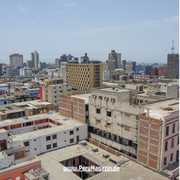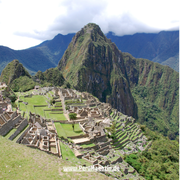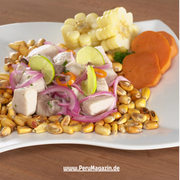Peru , officially the Republic of Peru , is located in the western part of South America and spans an impressive geographical diversity, ranging from the Pacific coast to the majestic Andes Mountains and the lush Amazon Basin. Here we take a detailed look at the country's various geographical features:
Location and boundaries:
Peru covers an area of approximately 1.28 million square kilometers and borders Ecuador and Colombia to the north, Brazil to the east, Bolivia to the southeast, and Chile to the south. Peru is bordered by the Pacific Ocean to the west. The country's geographical location between the equator and the Tropic of Capricorn and between the Pacific Ocean and the Andes shapes Peru 's climate and landscape in many ways.
The Andes:
Peru is crossed by a significant portion of the Andes, the longest mountain range in the world. This majestic mountain range stretches from north to south and divides the country into three geographical regions: the coastal region (Costa), the mountain region (Sierra) and the Amazon region (Selva). Rich in natural resources, including minerals such as copper, zinc and gold, the Peruvian Andes offer stunning landscapes of snow-capped peaks, deep valleys and fertile highland plateaus.
The coastal region (Costa):
Peru 's coastal region stretches along the Pacific Ocean and extends from the Ecuadorian to the Chilean border. This narrow, dry coastal strip region is characterized by desert landscapes, especially in the south, and fertile river valleys, such as the Valley of Ica and the Valley of Chincha. Lima, the country's capital, is located in this region and is the economic and cultural center of Peru .
Rivers:
Peru is crossed by several important rivers that are important waterways and lifelines for the country. The Amazon, the longest river in the world, has its source in the highlands of Peru , near the city of Aguaytía, and then flows through the Amazon basin before finally emptying into the Atlantic Ocean. Other important rivers are the Marañón, the Ucayali, the Huallaga and the Apurímac, all of which are part of the Amazon basin and supply the country with water and nutrients.
The Amazon region (Selva):
Peru 's Amazon region, also known as the Selva, encompasses most of the Amazon Basin and is one of the most biodiverse regions in the world. This dense, lush rainforest region is home to an astonishing variety of animal and plant species, including exotic birds, mammals, reptiles, amphibians and fish. Peru 's Amazon region plays a crucial role in the global ecosystem, helping to regulate the climate and water cycle.
Natural Wonders and Highlights:
Peru 's natural wonders and highlights include Lake Titicaca, the highest navigable lake in the world, which is located on the border with Bolivia and plays a significant role in the country's cultural heritage. The Nazca Lines, mysterious geoglyphic figures found in the desert south of Lima, are another fascinating natural phenomenon and UNESCO World Heritage Site. Colca Canyon, one of the deepest canyons in the world, located near the city of Arequipa, offers spectacular views and hiking experiences.
Peru is undoubtedly a country of diversity and contrasts, offering a rich natural and cultural heritage. From the rugged peaks of the Andes to the arid deserts of the coast and the lush rainforests of the Amazon Basin, Peru offers a wealth of landscapes, ecosystems and adventures for travelers and explorers alike. This geographical diversity shapes not only the landscape but also the culture and lives of the people of Peru , making it a unique and fascinating destination.
Sold out
Original price
€29,99
Original price
-
Original price
Original price
€29,99
Current price
€19,99
-
Current price
€19,99




